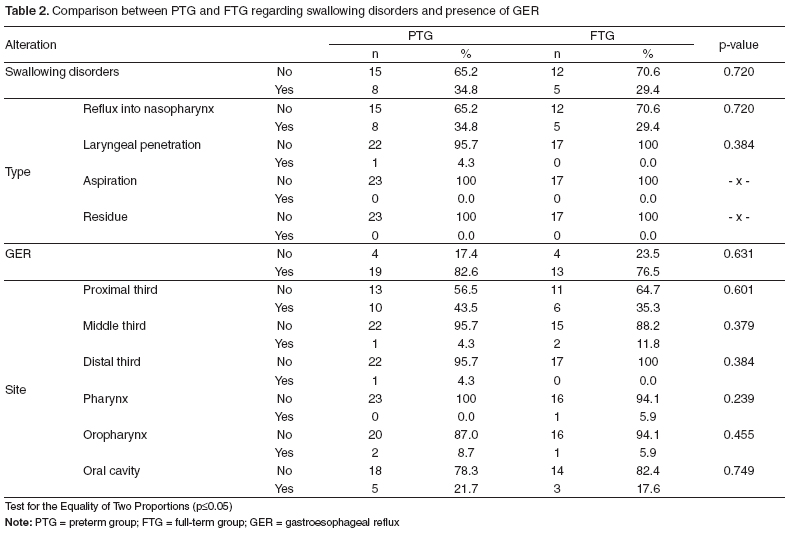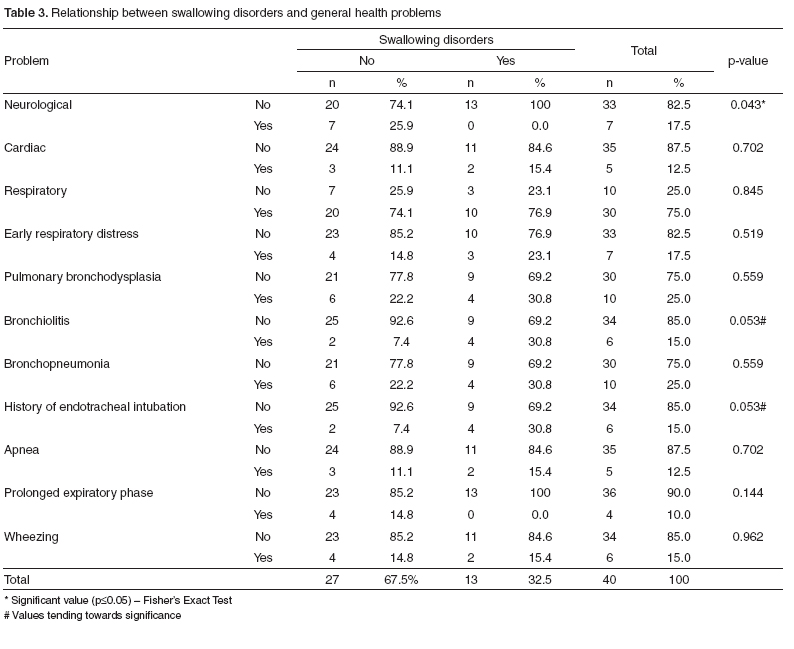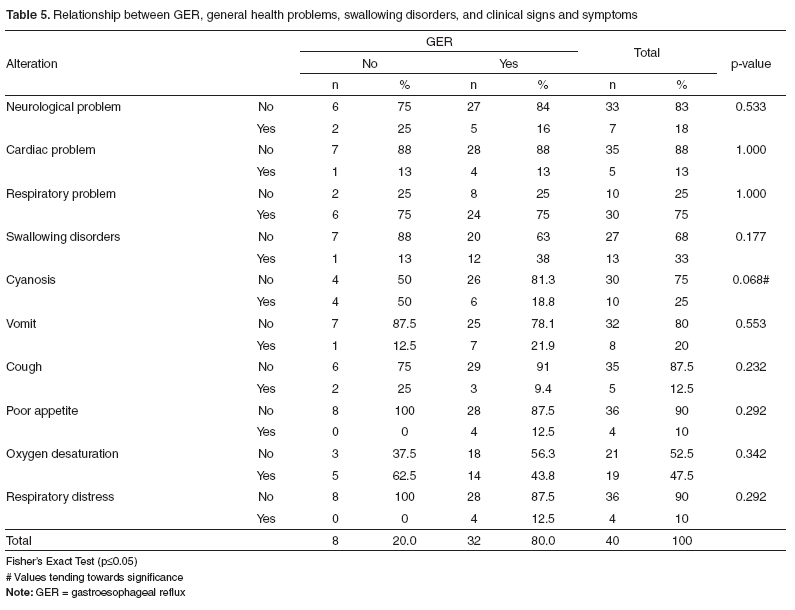PURPOSE: To describe the fluoroscopic findings of swallowing in preterm infants with zero to six months of age, as well as the related diseases and clinical signs and symptoms, and to compare these findings with data obtained from full-term infants. METHODS: The retrospective findings of fluoroscopic studies carried out in infants with zero to six months of age and their respective files were analyzed. Participants were 40 subjects divided into two groups: Preterm Group, composed by 23 preterm infants, and Full-Term Group, with 17 infants born full-term. RESULTS: Nasopharyngeal and gastroesophageal reflux were the main fluoroscopic findings of swallowing in both groups. There was no difference between the groups regarding the presence of swallowing disorders. The Preterm Group presented more cardiac problems than the Full-Term Group. No differences were found between the groups regarding neurologic and respiratory problems. With respect to clinical signs and symptoms suggestive of swallowing disorders, the Preterm Group presented more oxygen desaturation and the Full-Term Group, more vomiting. CONCLUSION: Nasopharyngeal reflux and gastroesophageal reflux were the main fluoroscopic findings of swallowing in preterm infants with zero to six months of age. New follow-up studies with this population must be carried out to confirm the hypothesis that the swallowing alterations observed were due to immaturity in the swallowing function.
Fluoroscopy; Infant; newborn; Infant; premature; Deglutition disorders; Gastroesophageal reflux





